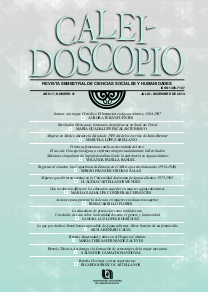Return to the cloister: the Capuchin nuns of Zamora in postrevolutionary Mexico (1934-1948)
DOI:
https://doi.org/10.33064/31crscsh537Keywords:
capuchins nuns, contemplative life, catholic church, ZamoraAbstract
This article reconstructs the process by which the common life was restored at the Capuchin Convent of the Sacred Heart of Jesus in Zamora, Michoacan, between 1934 and 1948. Through this case study the article aims to illustrate the way in which the female contemplative life could be renewed and practiced in Mexican Bajio and in Mexico in general after the Revolution and its anticlerical persecution. It emphasizes the ability of the capuchins to take advantage of the religious reconciliation and tolerance that were opened through the informal compromises between Church and State in the 1930’s, and shows that the nuns took an active role as Catholics and women. Doing so, they contributed to the renewal of religious practice in postrevolutionary Mexico through the restoration of the closure.Downloads
Metrics
Downloads
Published
How to Cite
Issue
Section
License
Licencia Creative Commons Atribución-NoComercial-CompartirIgual 4.0 Internacional
El lector es libre de compartir o adaptar el material en cualquier medio o formato bajo las condiciones siguientes: (a) debe reconocer adecuadamente la autoría, proporcionar un enlace a la licencia e indicar si se han realizado cambios; (b) no puede utilizar el material para una finalidad comercial y (c) si remezcla, transforma o crea a partir del material, deberá difundir sus contribuciones bajo la misma licencia que el original.
Resumen de la licencia
https://creativecommons.org/licenses/by-nc-sa/4.0/deed.es_ES
Texto completo de la licencia
https://creativecommons.org/licenses/by-nc-sa/4.0/legalcode
Cada autor es responsable del contenido de su artículo. En el caso de un texto colectivo, el primer autor asume la responsabilidad intelectual de los resultados del proceso editorial; los autores son responsables de obtener la licencia de autor para reproducir materiales gráficos o fotográficos que pertenecen a terceros.
Los autores asumen plena responsabilidad en el caso de falsificación de datos o falta de autenticidad en la investigación. Se comprometen, también, a no reutilizar trabajos ya publicados, total o parcialmente, para presentarlos en otra publicación.
Estas condiciones aplican tanto a la versión impresa como a la versión electrónica de la revista.

























